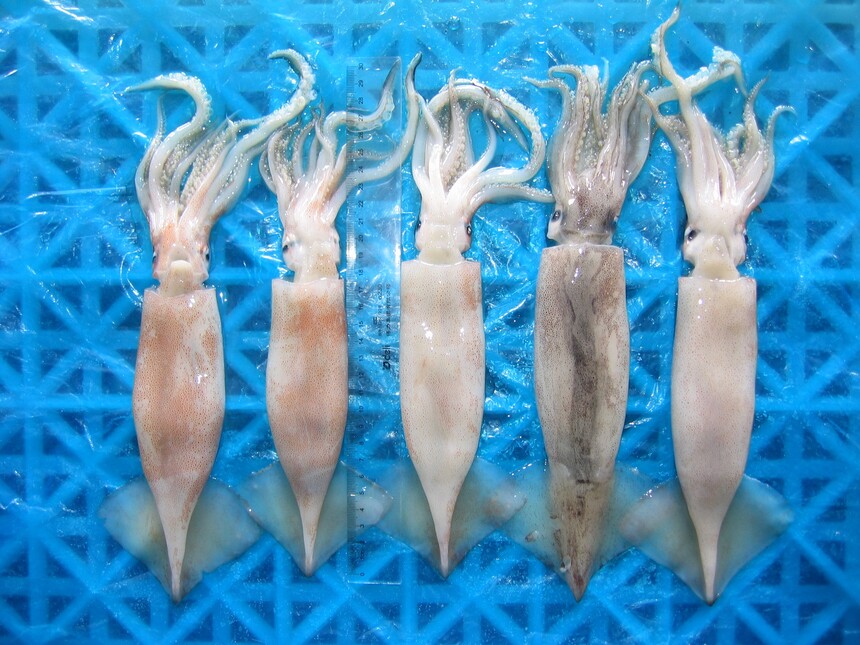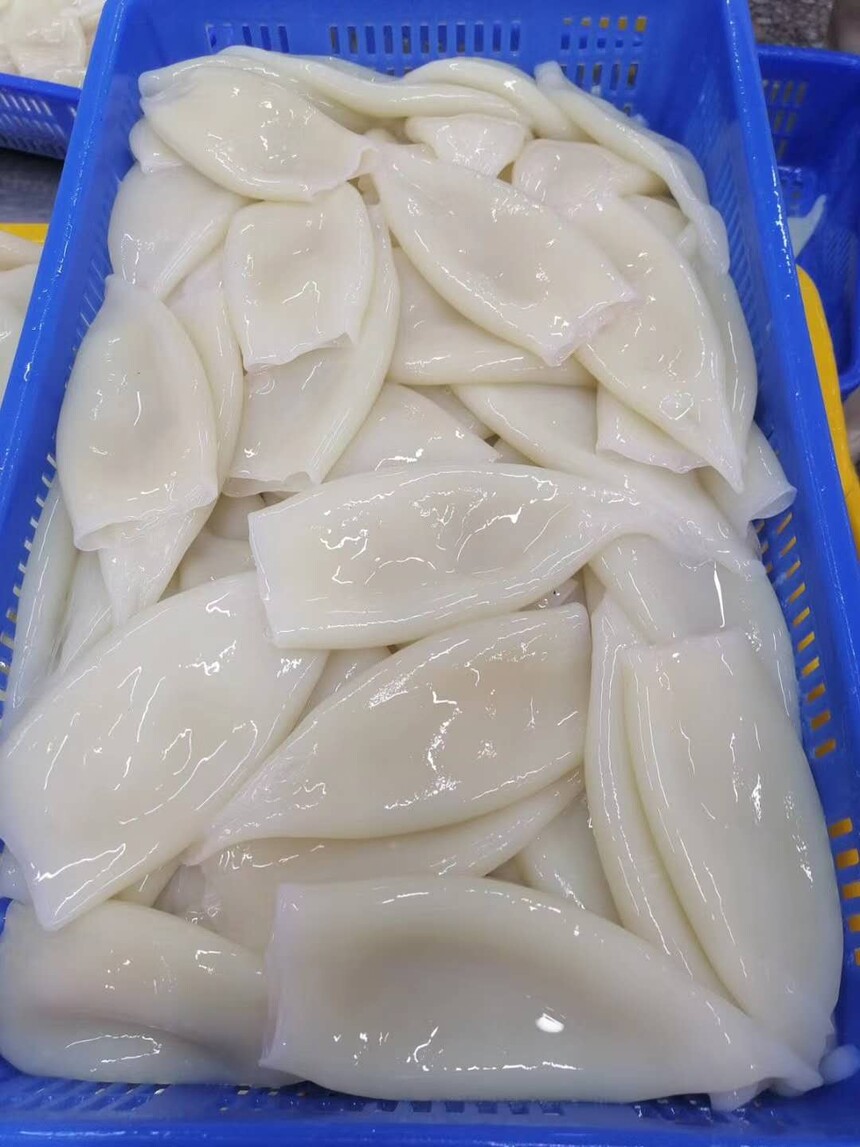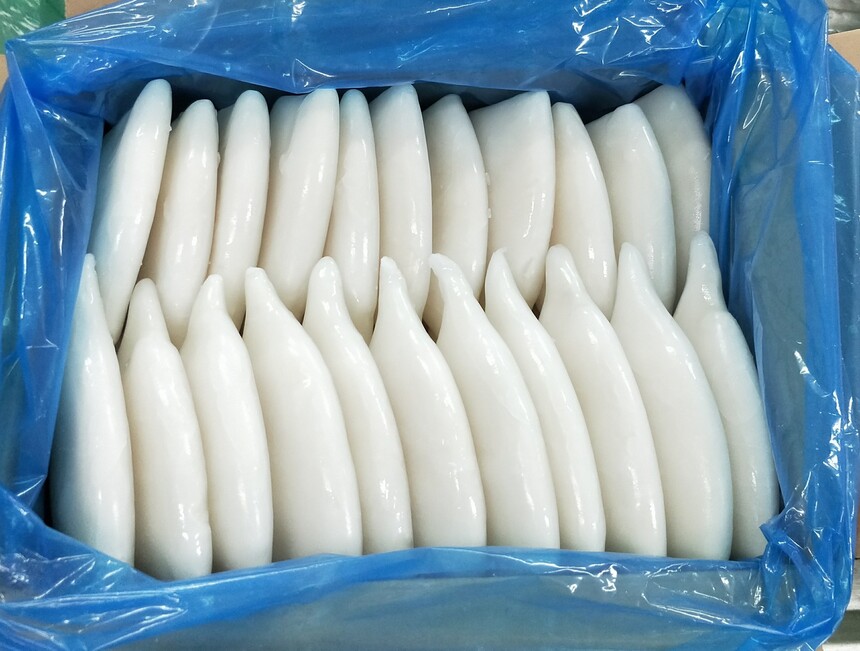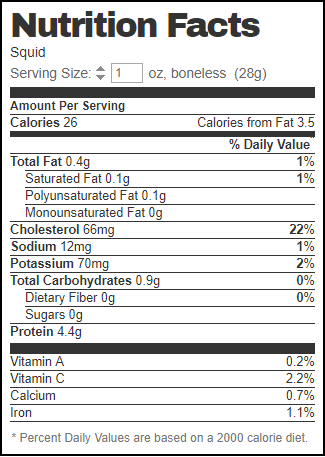|
Todarodes squid tubesFrozen squid tubes(Todarodes Pacificus) Size: U10, U7, U5 Glazing: 0-40%glazing as per your request Packing way: IQF, in bulk or retail bag packed EU standard, we can export to USA, EU, South Asia etc. Shipment time: within 2 weeks after placing order Pls contact us for orders:
Blue Sea Fishery Co., Ltd. E-mail: sales@blueseafishery.cn Wechat: DORIS85789 Tel: 0086-131-5609-5220 Blue Sea Fishery is a big supplier and exporter of frozen squid tubes, rings, flowers from China. Welcome to cooperate with us. 
Collect
Introduction The Japanese flying squid (Todarodes pacificus), also known as the Pacific flying squid, is a commercially vital cephalopod inhabiting the northwestern Pacific Ocean. It ranges from the coasts of Japan, China, and Russia southward to Vietnam and eastward to the Bering Strait, Alaska, and Canada. This species has a one-year lifespan, with distinct spawning groups:
Autumn spawners (October–December): Concentrated in the Sea of Japan, producing larger individuals with lower fecundity.
Winter/Spring spawners (January–March): Migrate counterclockwise around Japan, supporting major fisheries.
Catching Areas Primary Fishing Grounds Japan: Dominates catches, with key areas including the Sea of Japan, Tsushima Strait, and waters off Hokkaido and Tohoku.
Korea: Focused in the East Sea (Sea of Japan) and Yellow Sea.
Russia: Targeted near Vladivostok and the Bering Sea.
China: Harvested in the East China Sea and Yellow Sea .
Squid Tubes Processing Steps
Squid tubes (the cleaned, edible mantle of squid) are a popular processed seafood product, valued for their versatility in cooking (e.g., fried calamari, stir-fries, or salads). The processing of squid tubes involves several key steps to ensure quality, safety, and market readiness. Below is a detailed breakdown of the typical processing workflow:
1. Raw Material Receipt and Inspection Unloading and Sorting: Freshly caught squid (Todarodes pacificus) are unloaded from fishing vessels and sorted by size, freshness, and quality. Damaged, spoiled, or undersized squid are discarded.
Temperature Control: Squid are immediately chilled or frozen to preserve freshness. Most processing begins with frozen squid (to extend shelf life), which are thawed under controlled conditions (e.g., cold water or refrigeration) to prevent bacterial growth.
2. Cleaning and Evisceration This step removes inedible parts and prepares the squid for further processing:
Removing the Head and Tentacles: The head is separated from the mantle (the tube-shaped body) by cutting just below the eyes. Tentacles may be processed separately or discarded, depending on the product focus.
Removing the Innards: The mantle is slit open lengthwise, and internal organs (stomach, digestive tract, reproductive organs) are scraped or rinsed out.
3. Skin Removal Peeling the Skin: The outer skin (a thin, pigmented layer) is peeled off to improve texture and appearance. This is often done manually or with mechanical peelers, especially for larger squid.
Trimming: Any remaining connective tissue, damaged edges, or excess membrane on the mantle are trimmed to ensure a clean, uniform tube.
4. Sizing Forming Tubes: The cleaned mantle is rinsed thoroughly with cold water to remove debris, then shaped into a tube (either left whole or cut into smaller sections).
Uniform Sizing: Tubes are sorted by diameter and length to meet market specifications. Common sizes include “small” (U10), “medium” (U7), and “large” (U5).
6. Freezing Individual Quick Freezing (IQF): Most squid tubes are frozen using IQF technology, which freezes each piece separately to prevent clumping. This allows for easy portioning later.
Block Freezing: For bulk exports, tubes may be packed into blocks.and frozen in blast freezers at -30°C to -40°C to lock in freshness.
7. Packaging and Labeling Primary Packaging: Frozen squid tubes are sealed in moisture-proof plastic bags or vacuum-sealed to prevent freezer burn.
Secondary Packaging: Bags are packed into cartons or boxes, labeled with product details (species, size, weight, processing date, expiration date, and origin) to comply with import/export regulations (e.g., EU, FDA, or local standards).
8. Quality Control and Storage Inspection: Random samples are checked for texture, color, moisture content, and microbial safety (e.g., testing for pathogens like Vibrio or Salmonella).
Cold Storage: Finished products are stored at -18°C or lower in refrigerated warehouses until shipping, ensuring a shelf life of 12–24 months under proper conditions.
Key Considerations in Processing
HACCP Compliance: Processors follow Hazard Analysis and Critical Control Points (HACCP) protocols to minimize risks like bacterial contamination or chemical residues.
Sustainability: Traceability systems (e.g., tracking catch area and fishing method) are increasingly required by buyers to ensure the squid is sourced from sustainable fisheries.
Texture Preservation: Over-processing (e.g., excessive heat during blanching or slow freezing) can make squid tough, so precise timing and temperature control are critical.
By following these steps, processors transform raw squid into high-quality, market-ready squid tubes that meet global demand for convenient, versatile seafood products.
|














